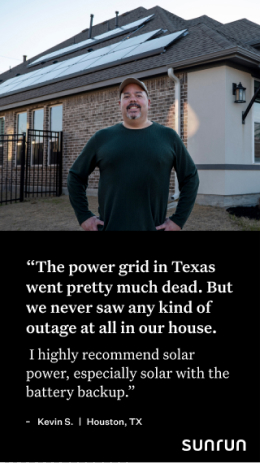The Climate is Changing. How Do I Explain This to My Children?
Sunrun Team
· 5The truth about climate change can be overwhelming for anyone, but especially young people.

In parking lots, our middle child sticks his head under car bumpers looking for exhaust pipes. He’s sorting out the electric vehicles from the ones that burn fossil fuels. Fossils, as in dinosaurs and other prehistoric animals and plants which, as most parents of young kids can appreciate, dominate many conversations in our house. Our children could not believe it when we told them that some cars burn prehistoric fossilized remains. I think the youngest was picturing a fossilized Allosaurus being stuffed directly into a gas tank.
Parenting comes with many worries––how’s our monthly budget look? Is bullying happening on the school bus? Did everyone eat enough vegetables / brush their teeth / go potty in the last two days? But, some worries feel impossibly huge, like COVID and climate change. How do we communicate these challenges to our children in a productive way?
My kids, Penelope, 10, Julian, 7, and Charlie, 4, are growing up in a world that’s different from the one we grew up in. We are already experiencing more frequent and more severe wildfires, droughts, and hurricanes than ever before. Species extinction and habitat loss are here now, and it will get worse. By 2050, when my kids are about my age, the climate will have warmed by at least 1.5 degrees if we continue along our current path, wreaking long-term havoc on large parts of the planet.
And yet, even in fossil fuel cars, our kids yell from the backseat, “Go Electric Car Speed!!” which is code for “jam the accelerator.” They already know that our small, cheap electric vehicle (EV) accelerates much faster than our older-model gas-guzzling family SUV.
Many young people these days are already familiar with climate solutions, so talking with them about climate change and how we solve it may not be as hard as we think.
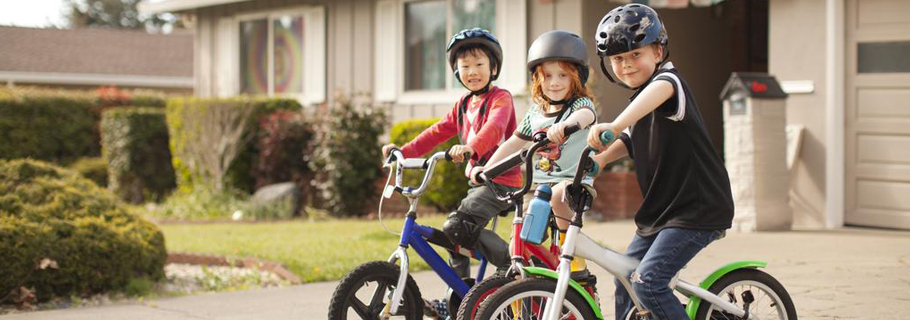
Explain Climate Change Simply
The truth about climate change can be overwhelming for anyone, but especially young people. Kids deserve to know the basic concepts behind the challenge, so that they can focus their energy on the solutions. Here’s the type of language I share with my kids, to give them the facts, while maintaining a positive attitude:
The sun warms the earth with its rays. Usually, many of the sun’s rays bounce off the earth and back into space, so that the planet doesn’t become too warm.
But there’s an invisible gas, called carbon dioxide, that can surround the earth like a blanket and keep in more sun rays. The more carbon dioxide, the thicker the blanket, and the warmer the earth gets. This is called global warming.
When the earth warms, the climate changes. When climates change, some people don’t have enough clean water - other places get too much and flood. Storms can get bigger and cause more damage to people’s houses. Many plants and animals find it hard to adapt and live in their new climate.
This is why humans have to do everything we can to stop carbon dioxide from getting into the air. Luckily we have the tools we need to cut carbon emissions from our lifestyles.
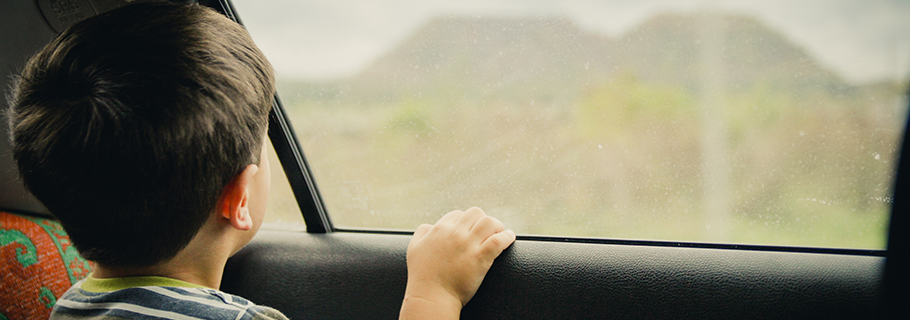
Look for the Helpers: Explain What We Can Do About Climate Change
Mr. Rogers had an oft-quoted line to comfort children during scary events: “Look for the helpers.” When we are in the car we play what we call “The Solar Game.” Whoever can spot and call out the most solar panels wins (pro tip: many digital road signs are powered by solar and batteries). I usually team up with four-year old Charlie, but even so, it’s tough to beat a sharp-eyed ten year old!
This game can be adapted for wind turbines, EVs, etc. Once you start looking for them, you’ll be surprised at the ubiquity of these helpful solutions. Fortunately, there are hundreds and thousands of people around the world working hard to deploy and scale solutions. By spotting solar panels and EVs, we are seeing the helpers everywhere. Here’s how I explain the solutions to my young people:
Instead of burning fossil fuels, we need to change everything to run on clean electricity. More and more we have the power to choose clean energy, which comes from renewable sources like the sun and the wind, to help in our fight against climate change.
Our family has a solar array on the roof that helps power our house and our EV. We are fortunate that our state and city have made it easy and affordable for us to install solar. As a family, we can fight for more people across the country, and the world, to have the ability to install solar and use clean energy.
Powering our home with clean energy also saves us lots of money because, once we pay for the solar panels, the power we generate from the sun is free, and unlimited. No one owns the sun, and there’s plenty of it! And, we get to leave those fossils in the ground.
Not only do we save money but it’s healthier for us––no more gas cook stove that releases harmful fumes into our home. Instead, we have an induction model that is faster and better. Not to mention the top doesn’t get hot, so it’s safer for young chefs who like to help in the kitchen.
Although our house is fully electric (heat pumps, heat pump hot water heater, induction cooking, etc.) we still have that fossil-burning SUV and a wood stove for the coldest winter nights. The next step in our climate journey is to replace the SUV with an electric Ford F-150 truck which will also be able to power the house when the grid goes down.
As a young family, it is especially important knowing that we save money by eliminating fossil fuels. In fact, electrifying home appliances, and powering them with solar power, saves an average home $1,500 - $2,500 per year. And, we feel good knowing that these clean solutions are putting many Americans to work with good paying jobs.
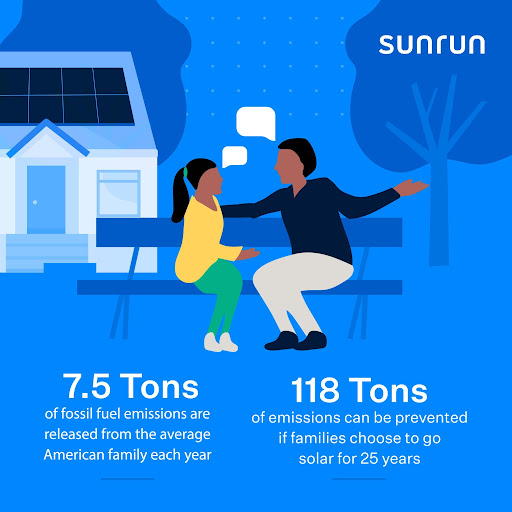
Working for Sunrun means I have direct knowledge of the cutting-edge technologies and low-cost financing options at consumers’ fingertips - but, Sunrun and other companies like it, are also climate journey guides for my family, many of my friends, and millions of people across the country. Turns out, removing fossil fuels from our lives is easier than we think.
Actions Always Speak Louder
The climate crisis is impacting lives across the country, from devastating wildfires in the West, to more frequent and severe hurricanes in the East. And other parts of the world, like Bangladesh and India already are being hit much harder by climate disruption. To borrow a line––the future is here, it’s just unevenly distributed.
But I don’t want my kids to despair and feel hopeless, because climate solutions are also here now, they are just also unevenly distributed. The more the next generation understands this, the more quickly we’ll be able to spread solutions as far and wide as possible.
I have more hope than ever that our children’s future will be cleaner and less climatically disrupted than we fear. But, a renewable, clean future is not inevitable. It starts with informative conversations at home, with our kids, speaking their language––it truly is time we stop stuffing fossilized dinosaurs directly into gas tanks!
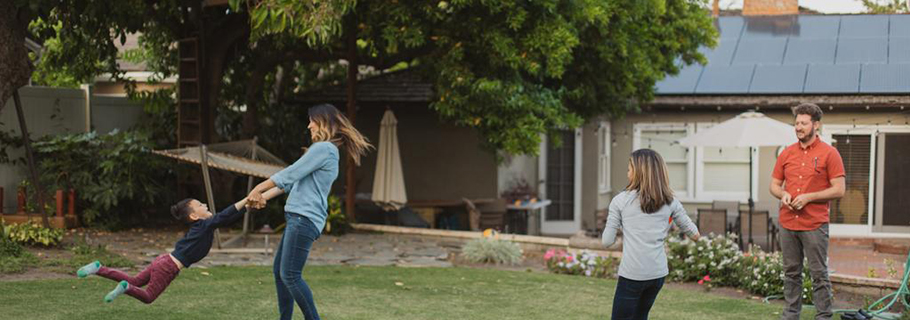
Solar is ready. Are you?
There are plenty of myths circulating about solar, but if the question is whether or not it’s worth going solar now, the answer is yes! Solar can help you save money, produce clean energy that is good for the planet, and alleviate strain on the aging grid so everyone can enjoy more reliable power. Solar energy works in the winter and when it’s cloudy, it can help reinforce and protect your roof, and has an ROI timeline of less than ⅕ the lifespan of the system. So, regarding the question of whether or not now is the time for solar, we think the answer is clear.
Author:
Chris Rauscher, Sunrun
